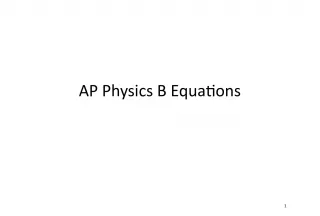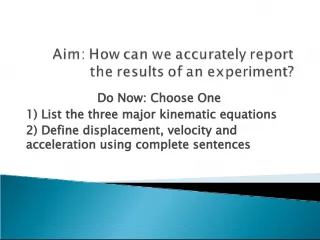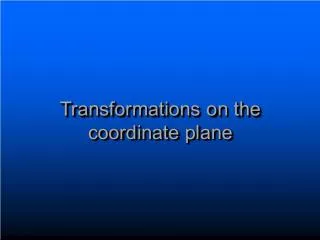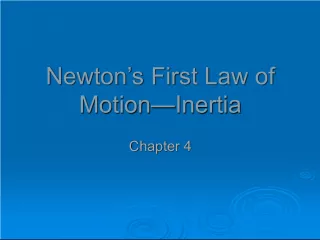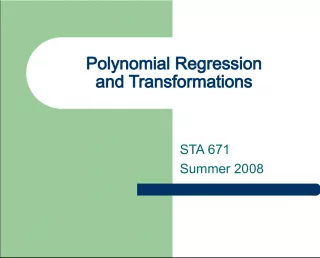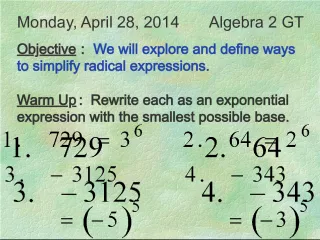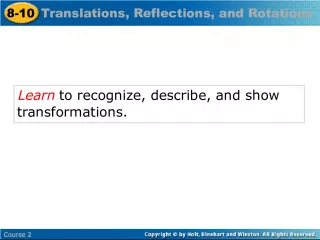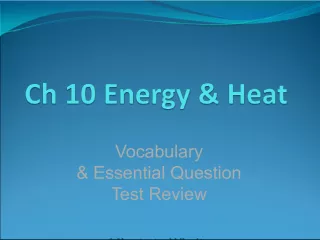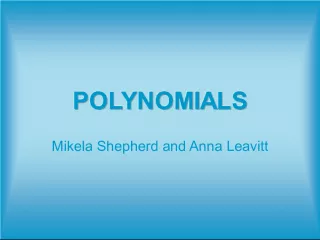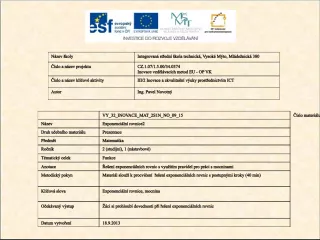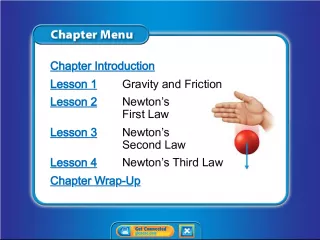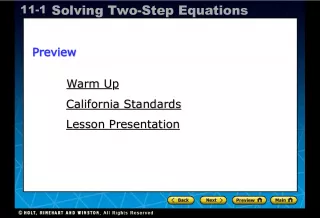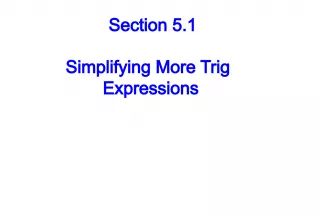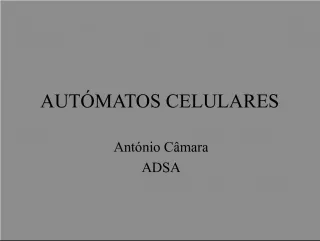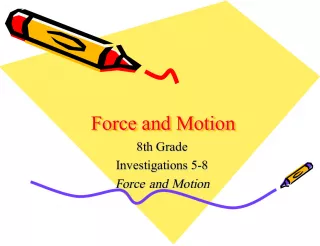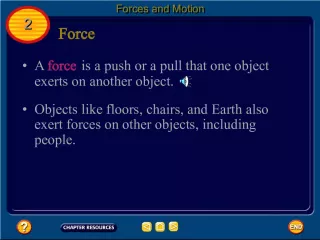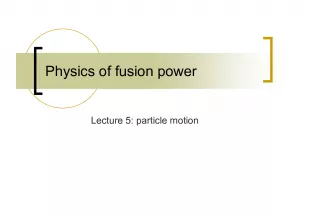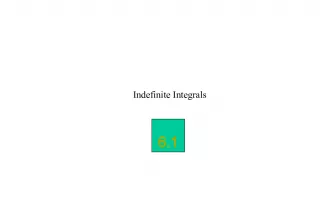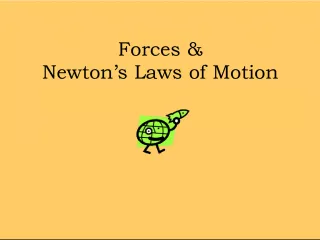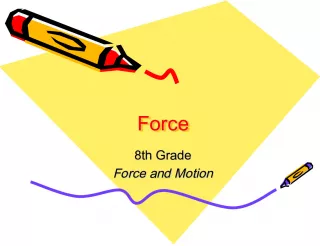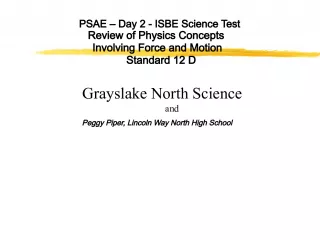Floquet Transformations and Resonances: Simplifying the Perturbed Equations of Motion
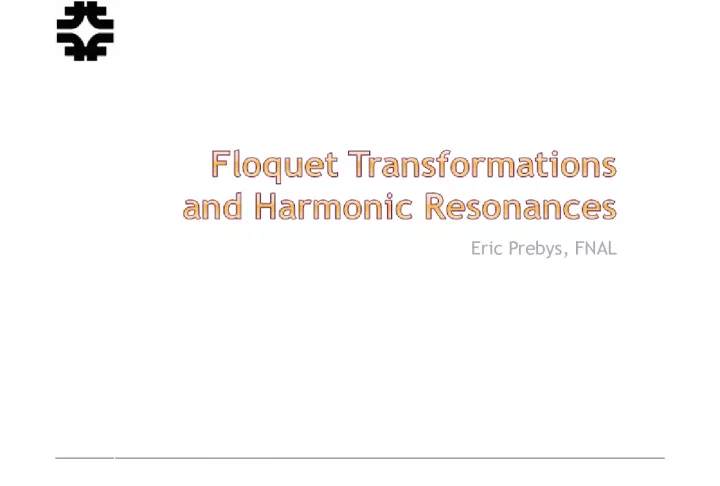

In this lecture by Eric Prebys at USPAS in Knoxville, TN, we explore the use of Floquet Transformations to simplify the complicated process of evaluating perturbed equations of motion. By bundling all additional terms into B non-linear plus linear field errors, we can apply a transformation similar to harmonic oscillations to simplify our equation.
- Uploaded on | 0 Views
-
 isisantwan
isisantwan
About Floquet Transformations and Resonances: Simplifying the Perturbed Equations of Motion
PowerPoint presentation about 'Floquet Transformations and Resonances: Simplifying the Perturbed Equations of Motion'. This presentation describes the topic on In this lecture by Eric Prebys at USPAS in Knoxville, TN, we explore the use of Floquet Transformations to simplify the complicated process of evaluating perturbed equations of motion. By bundling all additional terms into B non-linear plus linear field errors, we can apply a transformation similar to harmonic oscillations to simplify our equation.. The key topics included in this slideshow are Eric Prebys, USPAS, Floquet Transformations, Resonances, Equations of Motion, Knoxville,. Download this presentation absolutely free.
Presentation Transcript
1. Eric Prebys, FNAL
2. In our earlier lectures, we found the general equations of motion We initially considered only the linear fields, but now we will bundle all additional terms into B non-linear plus linear field errors We see that if we keep the lowest order term in B, we have USPAS, Knoxville, TN, Jan. 20-31, 2014 Lecture 11 - Floquet Transformations and Resonances 2 This part gave us the Hills equation
3. Evaluating these perturbed equations can be very complicated, so we will seek a transformation which will simplify things Our general equation of Motion is This looks quite a bit like a harmonic oscillator, so not surprisingly there is a transformation which looks exactly like harmonic oscillations USPAS, Knoxville, TN, Jan. 20-31, 2014 Lecture 11 - Floquet Transformations and Resonances 3
4. USPAS, Knoxville, TN, Jan. 20-31, 2014 Lecture 11 - Floquet Transformations and Resonances 4 So our differential equation becomes
5. We showed a few lectures back that So our rather messy equation simplifies USPAS, Knoxville, TN, Jan. 20-31, 2014 Lecture 11 - Floquet Transformations and Resonances 5
6. In the absence of nonlinear terms, our equation of motion is simply that of a harmonic oscillator and we write down the solution Thus, motion is a circle in the plane Using our standard formalism, we can express this as A common mistake is to view as the phase angle of the oscillation. the phase angle of the oscillation advances by 2 in one revolution, so its related (but NOT equal to!) the angle around the ring. USPAS, Knoxville, TN, Jan. 20-31, 2014 Lecture 11 - Floquet Transformations and Resonances 6 unnormalized!
7. In general, resonant growth will occur if the perturbation has a component at the same frequency as the unperturbed oscillation; that is if We will expand our magnetic errors at one point in as But in general, b n is a function of , as is , so we bundle all the dependence into harmonics of So the equation associated with the n th driving term becomes USPAS, Knoxville, TN, Jan. 20-31, 2014 Lecture 11 - Floquet Transformations and Resonances 7 Remember! ,, and b n are all functions of (only)
8. We can calculate the coefficients in the usual way with But we generally know things as functions of s , so we use to get Where (for a change) we have explicitly shown the s dependent terms. Were going to assume small perturbations, so we can approximate with the solution to the homogeneous equation USPAS, Knoxville, TN, Jan. 20-31, 2014 Lecture 11 - Floquet Transformations and Resonances 8
9. Plugging this in, we can write the nth driving term as We see that a resonance will occur whenever Since m and k can have either sign, we can cover all possible combinations by writing USPAS, Knoxville, TN, Jan. 20-31, 2014 Lecture 11 - Floquet Transformations and Resonances 9
10. USPAS, Knoxville, TN, Jan. 20-31, 2014 Lecture 11 - Floquet Transformations and Resonances 10 Magnet Type n k Order |1-k| Resonant tunes = m/(1-k) Fractional Tune at Instability Dipole 0 0 1 m 0,1 Quadrupole 1 1 0 none (tune shift) - 1 -1 2 m/2 0, 1/2,1 Sextupole 2 1 1 m 0,1 2 0 1 m 0,1 2 -1 3 m/3 0,1/3,2/3,1 Octupole 3 3 2 m/2 0, 1/2,1 3 1 0 None - 3 -1 2 m/2 0,1/2,1 3 -3 4 m/4 0,1/4,1/2,3/4,1
11. If our ring is perfectly periodic (never quite true), with a period N, then we can express our driving term as Where we have invoked the periodicity as Clearly, if m is any integer multiple of N , then all values are 1. Otherwise, the sum describes a closed path in the complex plane, which adds to zero, so That is, we are only sensitive to terms where m is a multiple of the periodicity. This reduces the effect of the periodic non-linearities USPAS, Knoxville, TN, Jan. 20-31, 2014 Lecture 11 - Floquet Transformations and Resonances 11
12. Remember that our unperturbed motion is just A resonance will modify the shape and size of this trajectory, so we replace a with a variable r and we can now express the postion in the r plane We express r 2 in terms of our variables and we have USPAS, Knoxville, TN, Jan. 20-31, 2014 Lecture 11 - Floquet Transformations and Resonances 12 Plug in n th driving term for this
13. Sextupole terms (n=2) can drive a third order resonance We will consider one value of | m | at a time Well redefine things in terms of all real components by combining the positive and negative m values USPAS, Knoxville, TN, Jan. 20-31, 2014 Lecture 11 - Floquet Transformations and Resonances 13
14. We have These are our general equations to evaluate the effects of particular types of field errors. Remember that our sensitivity to these errors is actually contained in the C m,n coefficients USPAS, Knoxville, TN, Jan. 20-31, 2014 Lecture 11 - Floquet Transformations and Resonances 14
15. So we have define real driving terms So we plug this into the formulas For unperturbed motion and were interested in behavior near the third order resonance, where ~ m/3 , so All other terms will oscillate rapidly and not lead to resonant behavior USPAS, Knoxville, TN, Jan. 20-31, 2014 Lecture 11 - Floquet Transformations and Resonances 15
16. So were left with The angular coordinate is given by We perform yet another transformation to the (rotating) coordinate system We then divide the two differentials to get the behavior of r 2 in this plane USPAS, Knoxville, TN, Jan. 20-31, 2014 Lecture 11 - Floquet Transformations and Resonances 16 Note: in an unperturbed system, this would just be
17. This equation can be integrated to yield A and B are related to the angular distribution of the driving elements around the ring. We can always define our starting point so B=0, so lets look at a is an integration constant which is equal to the emittance in the absence of the resonance. This is ugly, but lets examine some general features USPAS, Knoxville, TN, Jan. 20-31, 2014 Lecture 11 - Floquet Transformations and Resonances 17
18. The separatrix is defined by a triangle. Wed like to solve for the maximum a as a function of the driving term A. When a corresponds to the maximum bounded by the separatrix, we have that at USPAS, Knoxville, TN, Jan. 20-31, 2014 Lecture 11 - Floquet Transformations and Resonances 18 Plug this in when the angle =0, and we have In general
19. We convert back to our normal Floquet angle So as we move around the ring, advances and the shape will rotate by an amount (m/3) Since m/3~ is a non-integer, particles must always make three circuits ( =6) before the shape completely rotates at the origin. USPAS, Knoxville, TN, Jan. 20-31, 2014 Lecture 11 - Floquet Transformations and Resonances 19
20. If we increase the driving term (or move the tune closer to m/3), then the area of the triangle will shrink, and particles which were inside the separatrix will now find themselves outside These will stream out along the asymtotes at the corners. These particles can be intercepted by an extraction channel Slow extraction Very common technique USPAS, Knoxville, TN, Jan. 20-31, 2014 Lecture 11 - Floquet Transformations and Resonances 20 Extraction Field Septum Unstable beam motion in N(order) turns Lost beam Extracted beam
21. USPAS, Knoxville, TN, Jan. 20-31, 2014 Lecture 11 - Floquet Transformations and Resonances 21 We now want to define a new coordinate which represents the flutter with respect to the average phase advance. We define a new coordinate , such that We want to transform to new variables and I . Try unperturbed Hamiltonian
22. USPAS, Knoxville, TN, Jan. 20-31, 2014 Lecture 11 - Floquet Transformations and Resonances 22 In the x plane + a sextupole sextupole moment We have We expand this in a Fourier series The rest proceeds as before
23. USPAS, Knoxville, TN, Jan. 20-31, 2014 Lecture 11 - Floquet Transformations and Resonances 23 Expand the cos 3 terms and just keep the cos terms. Looking at Hamiltons Equations, we have Examine near Define a new variable
24. USPAS, Knoxville, TN, Jan. 20-31, 2014 Lecture 11 - Floquet Transformations and Resonances 24 The part of the Hamiltonian which drives the resonance is We now have the equations of motion the fixed points are when the two are zero so The rest proceeds in a similar fashion as before
